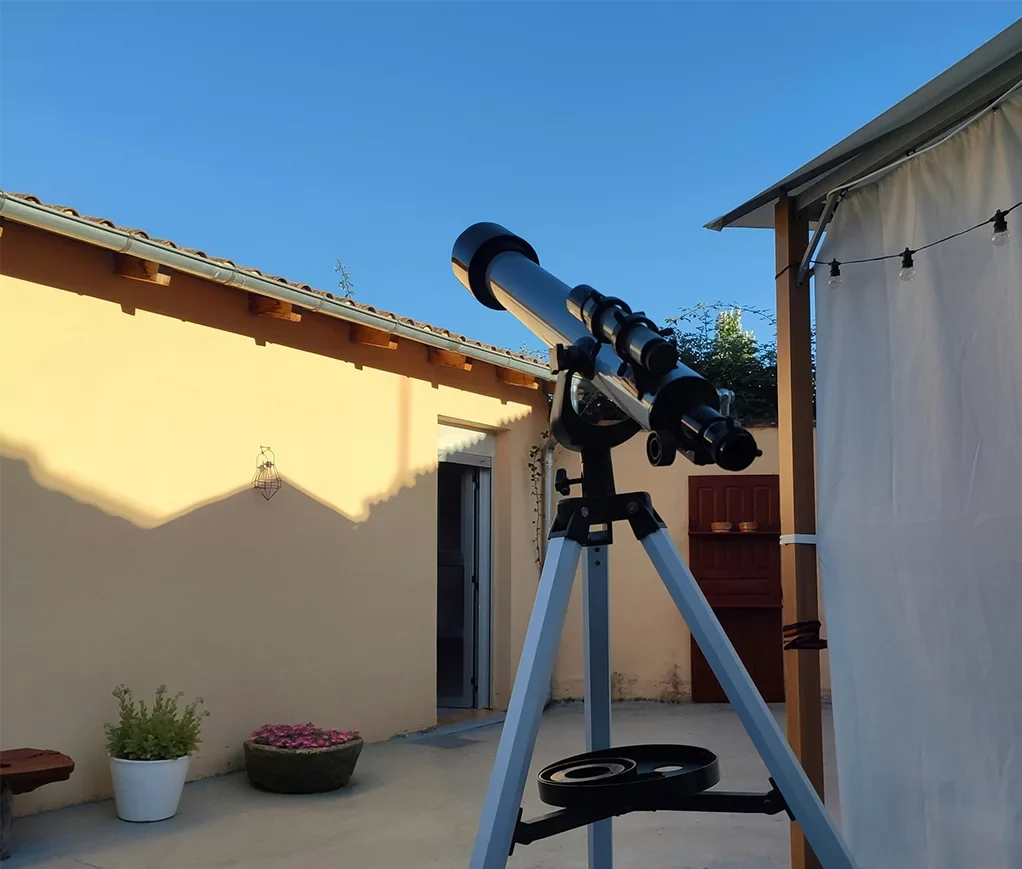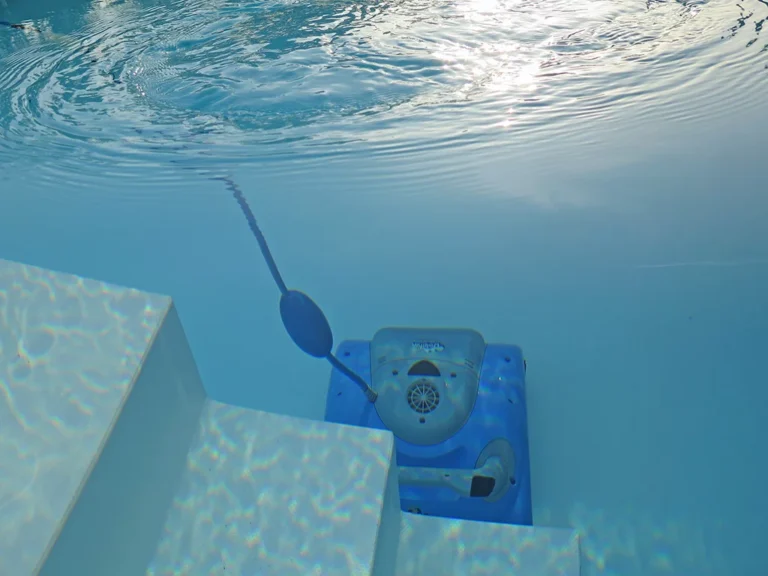10 Best Telescopes for Stargazing and Exploration in 2025

A quality telescope opens up the wonders of the night sky, bringing distant stars, planets, and galaxies into view. From backyard stargazing to deeper space exploration, the right telescope allows users to connect with the cosmos on a new level. Below are some top telescope picks, each selected for its unique features and performance, offering something for everyone.
Telescopes for Adults Astronomy, 80mm Aperture 600mm Refractor Telescope for Kids & Beginners
- 80mm aperture with fully coated optics for bright, clear images.
- High transmission optics minimize light reflection, maximizing light transmittance.
- Includes two eyepieces and a 5x24 finder scope for easy object location.
- Comes with a customized mobile phone adapter for convenient use.
- Easy to assemble with a detailed manual and video instructions.
- Portable design with a carrying backpack, ideal for travel.
- Great for both beginners and seasoned astronomers.
Gskyer Telescope, 70mm Aperture 400mm
- Features a 400mm focal length and 70mm aperture with fully coated optics for stunning images.
- Ideal for exploring stars and the moon, perfect for beginners and kids.
- Comes with two eyepieces and a 3x Barlow lens to enhance magnification.
- Includes a 5x24 finder scope for easy object location.
- Package includes a smartphone adapter and wireless remote for capturing images.
- Adjustable aluminum tripod provides multiple viewing positions and portability with a carry bag.
- Backed by a two-year warranty and 24-hour technical support.
Telescope 150EQ Astronomical Reflector
- Features a large 150mm aperture and 650mm focal length for exceptional image quality.
- Suitable for both beginners and experienced astronomers, including children.
- Pre-assembled German Equatorial mount with slow-motion cables for easy viewing.
- Comes with fully-coated glass optics, two eyepieces, a 2x Barlow lens, and a red dot finderscope.
- Durable stainless steel tripod ensures stable support during stargazing.
- User-friendly setup, making it easy for novices to start exploring the night sky.
- Quality customer service with prompt responses to inquiries.
Celestron - NexStar 8SE Telescope
- Combines classic design with modern technology, ideal for beginners and seasoned users.
- 8-inch aperture Schmidt-Cassegrain optics for powerful light-gathering capabilities.
- Compatible with StarSense technology and WiFi for automated GoTo mount.
- Contains a database of over 40,000 celestial objects for easy navigation.
- Features SkyAlign technology for quick setup and alignment.
- Sturdy steel tripod allows for easy assembly and disassembly.
- Includes a 2-year warranty and access to US-based customer support.
- 90mm aperture and 700mm focal length for powerful optical performance.
- Vertisteel AZ mounting base allows for precise positioning and smooth adjustments.
- Includes wireless remote control and phone adapter for easy image capture.
- Comes with a carrying case for portability and protection.
- Suitable for both children and adults, user-friendly for beginners and experienced stargazers.
- Lightweight and compact for easy transport to stargazing locations.
- Simple setup process maximizes observation time.
MEEZAA Professional Astronomical Refractor Telescope
- Ideal for beginners interested in astronomy and exploring the night sky
- 90mm aperture with 800mm focal length captures more light for brighter images
- Offers magnification of 32X to 240X with two eyepieces and a 3X Barlow lens
- Includes adjustable stainless steel tripod and carry bag for easy transport
- Easy assembly with guidelines and 24/7 technical support available
Celestron - NexStar 130SLT Computerized Telescope
- Database of over 4,000 celestial objects for precise location and tracking.
- Compatible with 2-inch eyepieces for various viewing options.
- Designed for portability, suitable for both adults and kids.
- 130mm Newtonian reflector aperture reveals stunning Solar System details.
- Bonus download of Starry Night software for enhanced stargazing experiences.
- Two-year warranty with expert technical support included.
- Excellent for camping trips and dark-sky excursions.
Gskyer 130EQ Professional Astronomical Reflector
- Features a 5.1-inch aperture with high transmission coatings for clear images.
- Compact optical tube and f/5 focal ratio for user-friendly experience.
- Includes three eyepieces, a 3X Barlow lens, and an adjustable tripod.
- Bluetooth-compatible remote for easy photography and sharing.
- Comes with a 1-year warranty and lifetime maintenance support.
- Designed for easy observation of celestial objects.
ToyerBee Telescope for Adults & Kids
- Features a 70mm aperture for brighter images and a wide field of vision.
- Offers magnification from 15X to 150X with two eyepieces and a 3X Barlow lens.
- Adjustable tripod with height ranging from 13.8" to 40.5" for easy use.
- Includes a phone adapter and wireless remote for capturing images.
- Perfect for beginners, kids, and astronomy enthusiasts.
- Makes an excellent gift for children aged 8 to 12.
- Comes with a 3-year customer service guarantee for assistance.
Celestron – StarSense Explorer LT 114AZ
- Transforms your smartphone into a personal guide to the night sky.
- Uses patented StarSense technology for real-time star pattern identification.
- App provides personalized viewing recommendations based on time and location.
- Features a manual altazimuth mount for easy target locating.
- High-quality 114mm Newtonian reflector for detailed views of celestial objects.
- Backed by a 2-Year US Warranty and unlimited expert support.
Advertising Disclosure: Links on our site may lead to commissions from qualifying purchases, helping us feature the best products.
Why Invest in a High-Quality Telescope?
Telescopes offer new perspectives on the sky, making celestial objects accessible for observation. Well-built models deliver sharper views, smooth adjustments, and reliable stability. Observing details on the moon, tracking planets, or spotting nebulae becomes easier with dependable equipment. For those interested in astronomy, telescopes inspire curiosity and a deeper appreciation of the universe.
Choosing a telescope with durable lenses, a stable mount, and smooth focus adjustments creates an enjoyable stargazing experience. If you enjoy observing planets or constellations closely, selecting the right model can make each session rewarding.
Telescope Features to Consider
Several features shape how a telescope performs under different conditions:
- Aperture Size: The aperture, or lens diameter, affects the telescope’s light-gathering ability. Larger apertures gather more light, resulting in brighter, detailed views, which can be helpful when observing distant objects like galaxies and nebulae.
- Magnification Power: While aperture determines light capture, magnification power brings celestial bodies closer into view. Many telescopes include one or more eyepieces to adjust magnification, a key factor for observing planetary details and the lunar surface.
- Mount Type: The mount supports the telescope and influences movement. Alt-azimuth mounts offer simple, up-and-down or left-to-right movement, making them user-friendly. Equatorial mounts, meanwhile, track the motion of celestial objects across the sky, helpful for extended sessions.
These features impact viewing quality and usability, allowing telescopes to suit a range of preferences.
Different Types of Telescopes
Telescopes are available in three main types, each with strengths suited to different uses:
Refractor Telescopes
Refractor telescopes use lenses to gather and focus light, offering a straightforward design. Known for their low-maintenance nature, these telescopes work well for observing planets and the moon.
- Benefits: Deliver sharp, clear images with minimal upkeep; popular with beginners and ideal for planetary viewing.
- Drawbacks: Higher cost per inch of aperture; often limited for deep-sky observation due to smaller apertures.
Reflector Telescopes
Reflector telescopes use mirrors rather than lenses, providing larger apertures at a lower cost. This type is well-suited for viewing deep-sky objects.
- Benefits: Larger apertures for the cost, making them suitable for viewing faint objects like galaxies and nebulae.
- Drawbacks: Mirrors require periodic alignment and may be sensitive to dust accumulation.
Compound Telescopes
Compound, or catadioptric, telescopes combine lenses and mirrors, balancing the advantages of both. These models are compact and versatile, working well for planetary and deep-sky observation.
- Benefits: Versatile and portable, combining high power with easy transport; ideal for storage and mobility.
- Drawbacks: Usually higher-priced and may require longer cooling times for optimal viewing.
These types of telescopes each support different viewing interests, allowing users to choose based on their focus areas.
Expanding Your Telescope’s Use Beyond Stargazing
The uses of a telescope go well beyond nighttime views of stars and planets. During the day, it can be applied to birdwatching or exploring distant landscapes, providing a way to observe natural details from a distance. By using this tool for terrestrial viewing, you gain fresh perspectives on wildlife or scenery, bringing another dimension to outdoor experiences.
Astrophotography is another popular activity, as many telescopes allow users to attach cameras or adapters. This setup captures images of the moon, planets, and certain deep-sky objects, making it possible to record what’s seen and share those scenes with others. Star pattern identification also becomes simpler, allowing a deeper dive into constellations and a better grasp of astronomy.
Lens and Mirror Types and Their Impact on Viewing
Lens and mirror design greatly influences a telescope’s clarity and image quality. Here are a few common types:
- Achromatic Lenses: Common in refractors, they provide color correction but can show slight color fringing around bright objects.
- Apochromatic Lenses: Offer superior color correction, resulting in sharper images, though often at a higher cost.
- Parabolic Mirrors: Used in reflectors, these mirrors focus light more effectively, reducing distortion and offering clearer views.
Choosing the right lens or mirror type helps users get the best results, especially when viewing specific objects like planets or deep-sky formations.
Reducing Vibration and Stabilizing Your Telescope
Stabilizing the telescope setup is key for clear, sharp views. A sturdy tripod or mount will reduce movement, which is especially useful in windy conditions or on uneven surfaces. Positioning the telescope on level or solid ground also helps control vibrations, resulting in a steadier view of the night sky.
For an extra layer of stability, adding weight to the base or tripod can make a difference. Some tripods and mounts include hooks or attachment points designed for this purpose, which provide added steadiness. With these adjustments, each session offers a more seamless and satisfying experience when observing space.
Choosing a Telescope Within Your Budget
Telescopes vary in price, allowing options for different budgets and needs.
- Budget Telescopes ($100–$300): Entry-level models suitable for beginners interested in casual stargazing or planetary observation.
- Mid-Range Telescopes ($300–$800): Offer larger apertures and better stability, fitting well for intermediate users wanting to explore deeper space objects.
- High-End Telescopes ($800 and above): These models feature high-quality materials, advanced mounts, and accessories, ideal for dedicated astronomy enthusiasts and long-term use.
Knowing what each price range typically offers can help users make informed decisions based on their goals and investment level.















